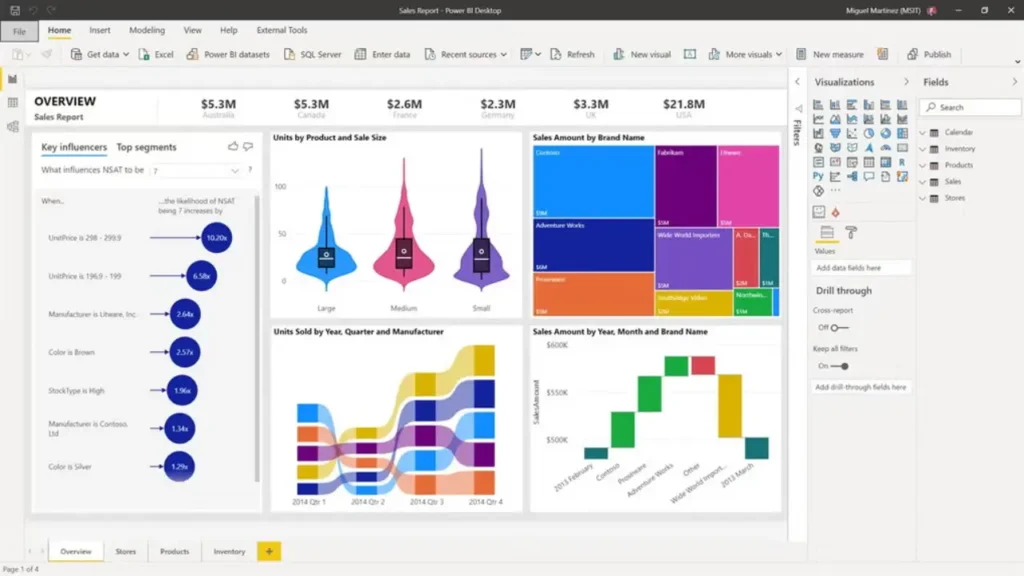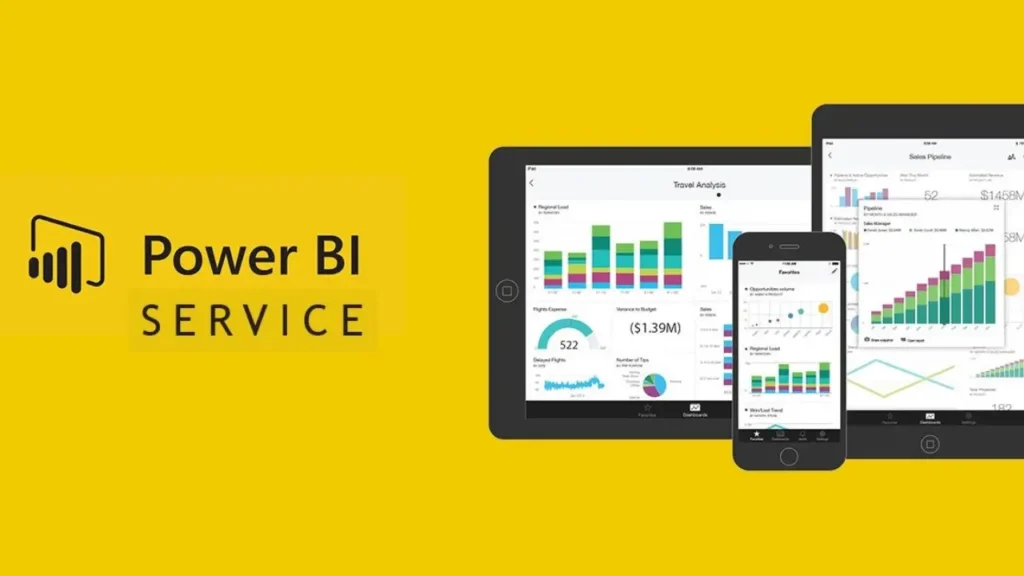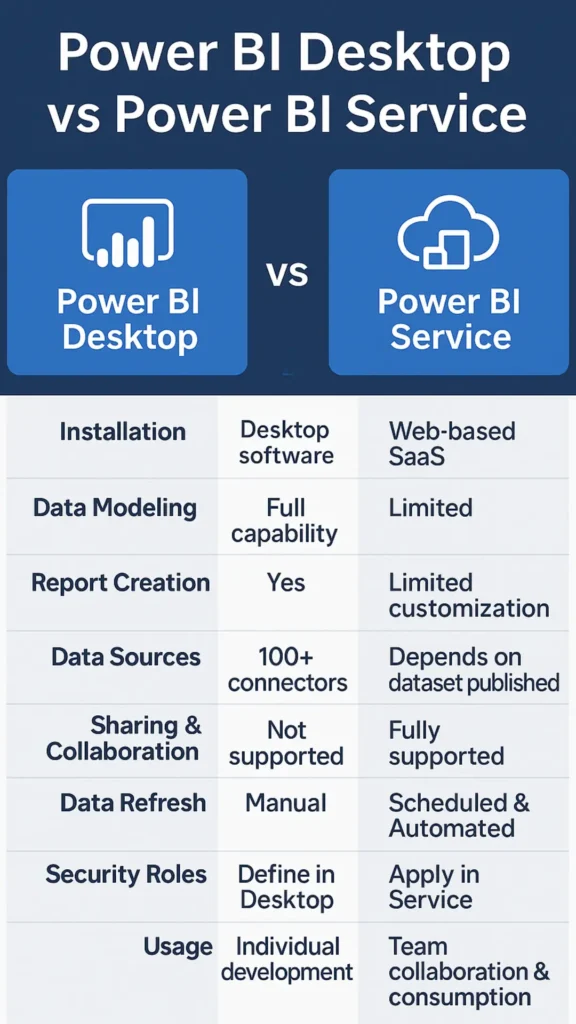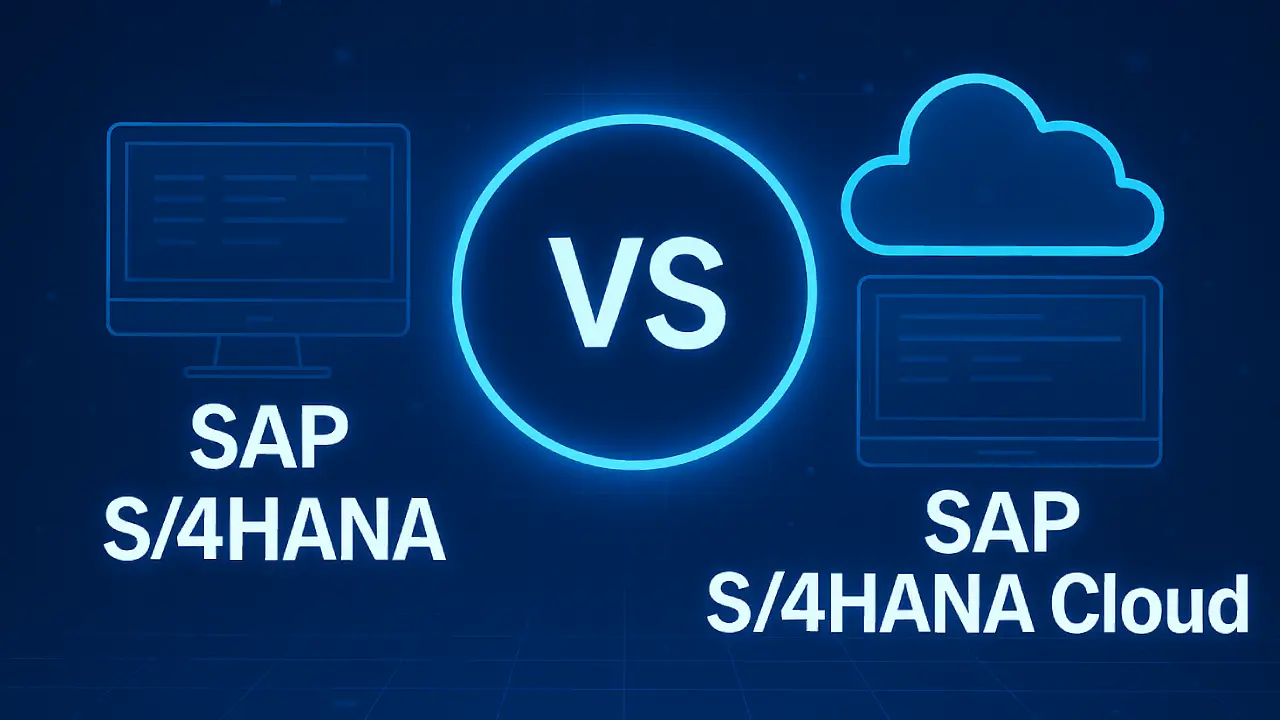Power BI is Microsoft’s powerful business analytics toolset that allows users to visualize data and share insights across their organizations. It comes in two core versions: Power BI Desktop vs Power BI Service. While both are part of the same ecosystem, they serve different purposes.
In this blog, we’ll break down the key differences between Power BI Desktop vs Power BI Service so you can choose the right platform for your data analysis and reporting needs.
What Is Power BI Desktop?
Power BI Desktop is a free Windows-based application used primarily by analysts to build data models, create visualizations, and design interactive reports.
Key Features of Power BI Desktop:
- Data transformation using Power Query
- Build complex data models and relationships
- Create custom visuals and dashboards
- Import data from 100+ sources (Excel, SQL Server, APIs, etc.)
- DAX (Data Analysis Expressions) support for advanced calculations
- Offline report development

What Is Power BI Service?
Power BI Service, also known as Power BI Online, is a cloud-based SaaS platform. It allows users to share, collaborate, and publish reports and dashboards created in Power BI Desktop.
Key Features of Power BI Service:
- Access and view reports anywhere via browser
- Share dashboards with your team or organization
- Schedule automatic data refresh
- Create workspaces for collaboration
- Integration with Microsoft Teams, SharePoint, and Power Platform
- Use Power BI Apps to bundle and distribute content

Power BI Desktop vs Power BI Service: Side-by-Side Comparison
| Feature | Power BI Desktop | Power BI Service |
|---|---|---|
| Installation | Desktop software | Web-based SaaS |
| Data Modeling | Full capability | Limited |
| Report Creation | Yes | Limited customization |
| Data Sources | 100+ connectors | Depends on dataset published |
| Sharing & Collaboration | Not supported | Fully supported |
| Data Refresh | Manual | Scheduled & Automated |
| Security Roles | Define in Desktop | Apply in Service |
| Usage | Individual development | Team collaboration & consumption |
| Cost | Free | Requires Pro or Premium license |

When to Use Power BI Desktop?
Use Power BI Desktop when:
- You are developing new reports or dashboards
- You need complex data modeling and transformation
- You want to work offline without internet access
When to Use Power BI Service?
Use Power BI Service when:
- You want to publish and share reports across your organization
- You need real-time dashboards for business users
- You want to manage data refresh schedules and permissions
- You need collaborative workspaces
Final Thoughts
Power BI Desktop and Power BI Service are complementary tools, not competitors. Typically, analysts use Power BI Desktop to create rich data reports, and then publish them to Power BI Service for distribution and collaboration.
By understanding the differences between Power BI Desktop and Power BI Service, you can optimize your data workflow and leverage the full power of Microsoft’s business intelligence ecosystem.







